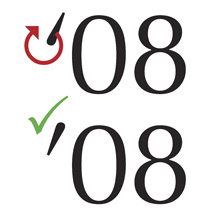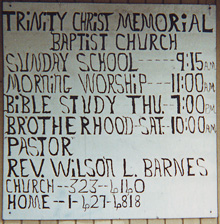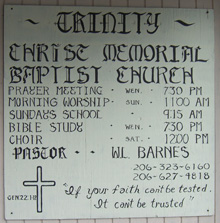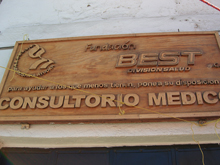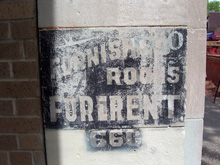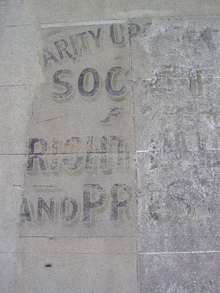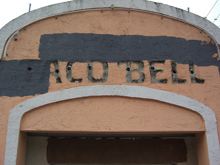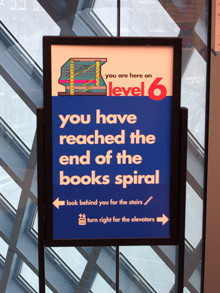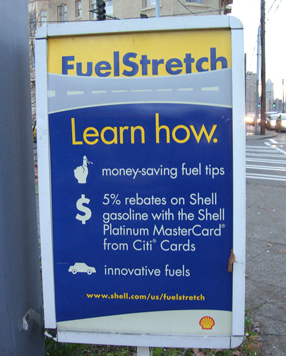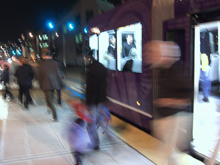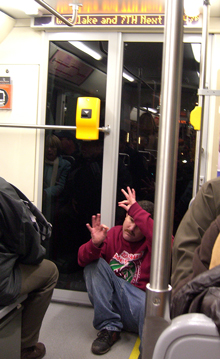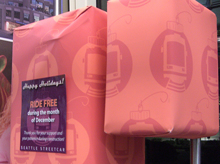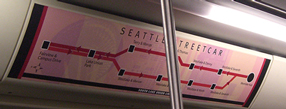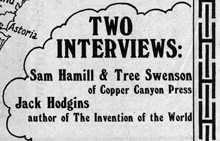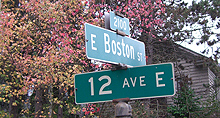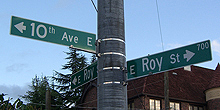Seattle’s street signs have recently been undergoing a change. While they’re still the same recognizable freeway-green rectangles, outlined in white and with white letters reversed out of the green, the new signs have noticeably larger type. The old signs (top, left) were always easily legible – upper and lowercase letters, except in secondary information such as “AVE,” and always spaced loosely enough to be readable at an angle from a moving car – though a lot of the old signs are now too faded to do their job. (I had to search a bit to find an example of old signs that were still in good condition.) Even the numerals were legible, an important consideration in a city with lots of numbered streets.
The new street signs (bottom, left) aren’t obviously different, except that the letters are larger. They take up more of the space inside the green rectangle, which creates a less pleasing shape but make them readable from a greater distance away. They look a bit bloated when you see them from the sidewalk, as you walk along a city street; but from a moving car, they’re large and clear. Clearly that was the priority in their design.
Some of the small details are fussier in the new signs. It might seem better to have “Ave” in upper and lowercase letters, like the street name, since it’s more legible than the old all-caps setting; but this is purely secondary information, so it’s actually a distraction. Similarly, the gratuitous addition of superscripts such as “th” on “10th Ave E” just clutters things up. The simpler the form, the better, as long as the essential information is there.
In case you’re wondering, the arrows in the bottom photo are there simply because I took that picture at a peculiar intersection where streets come together at an angle.
Categorized as ambient letters, design, information design |

